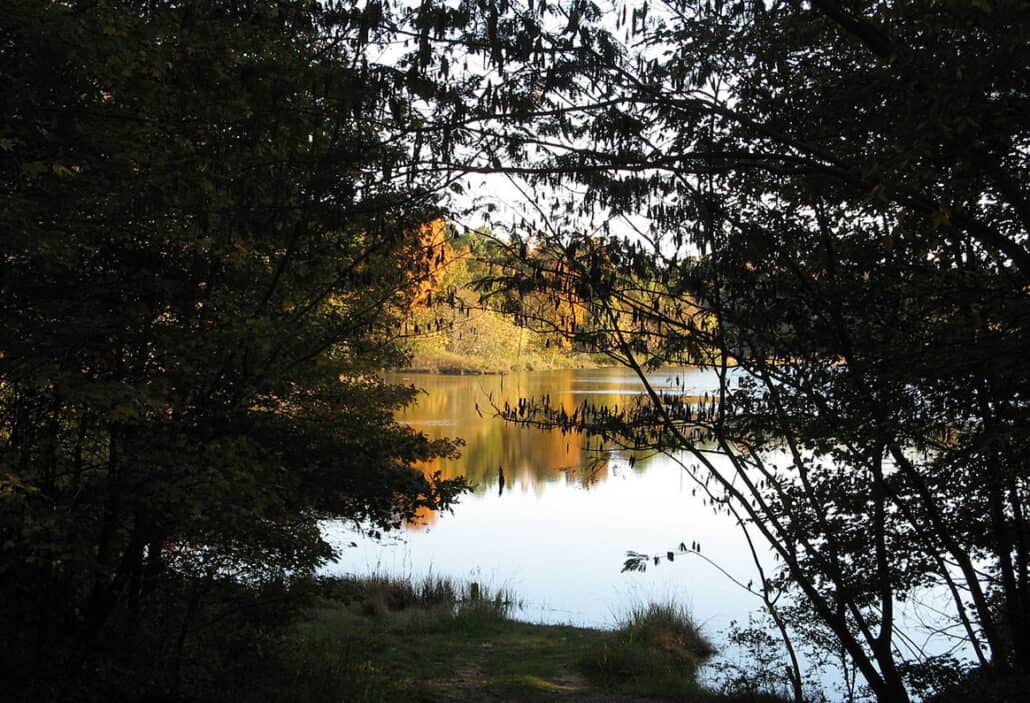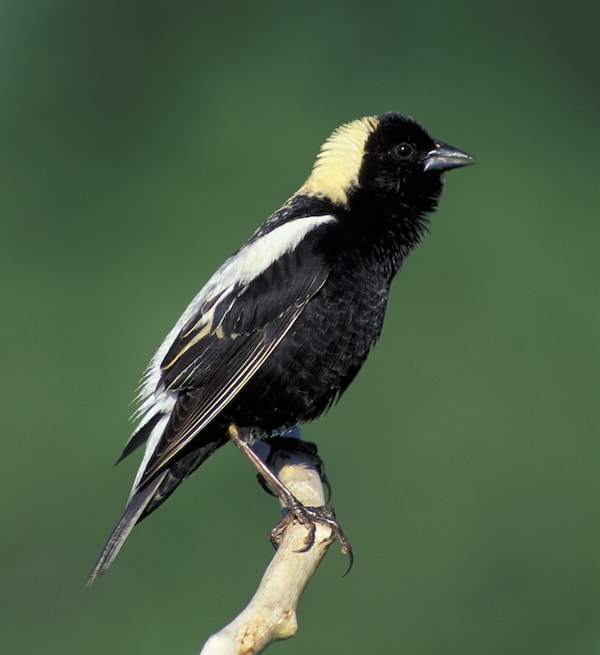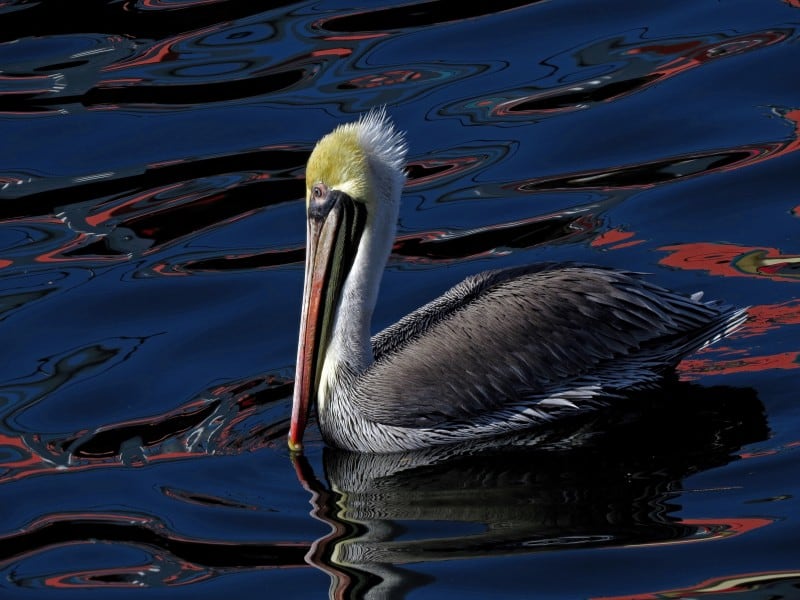Where does one find birds in Mississippi? Just about everywhere. Many species are ubiquitous, you just can’t miss them, even in urban areas. In the busiest sections of the largest cities, there are always rock pigeons, European starlings, and house sparrows. The parking lots of supermarkets and fast food emporiums are seldom without their daytime scavengers–gulls, crows, grackles, and others. A skyward glance might serve up a passing hawk or a great blue heron, a chimney swift or a seasonal swallow.
Suburbs are better. Presuming there is natural growth somewhere in your neighborhood, and hopefully your own yard, it is certain there are birds like jays, chickadees, titmice, wrens, robins, mockingbirds, and cardinals on almost any day in the year. There is no predicting what will join them in season, but be assured that some of the most colorful and exciting little treasures of the bird world could drop in for an hour, a day, or a week. One or two of them, such as a great crested flycatcher or a red-eyed vireo, may even stay to nest, or a finch with ties to the northern states may stay for the winter.
Many who stumble, more or less, into the wonder of birds are caught up by an eye-catching bird that appears among the usual backyard suspects. The natural progression of events dictates that sooner or later yard birds, no matter how appealing, aren’t quite enough to satisfy us. That’s the “grass is always greener somewhere else” syndrome.
At that point in your budding career as a bird watcher you will look around for local parks, refuges, shores, lakes, and woodlands, and be truly enlightened by what is “out there,” not far from home. You might discover that a pileated woodpecker lives in the park around the corner, that ducks of all descriptions take refuge at the refuge, that there are more than colloquial “seagulls” on the beach. You could find a loon on a lake, and nuthatches in the woodlands.
Sampling what your own area has to offer helps you to make distinctions between habitats; you will begin to recognize that birds live in different places, and if you want to see most of the birds, you must go to where they are.
That is when you start exploring Mississippi, from its highest point in the northeast to its lowest point along the Gulf Coast; from the bluffs of the Mississippi River to the catfish farms in the delta to the great reservoirs and dams of the interior, to the widespread and seemingly empty fallow fields throughout; from the barrier islands in the Mississippi Sound to the green islands of our national wildlife refuges.
There are 47,716 square miles of surface land in this state, including 450 square miles of inland water. There are 44 miles of coastline and five major drainage systems – the Tombigbee, Pascagoula, Pearl, Big Black, and Yazoo Rivers, which empty into the Gulf of Mexico directly or by way of the Mississippi River.
Mississippi has a humid subtropical climate, four distinct seasons, including hot summers and mild winters, and plenty of rainfall. Geographically, we are above the center of the Gulf of Mexico and near due north of the Yucatan Peninsula; thus it is ideal for watching the twice yearly parade of trans-gulf migrants.
The map outlining eco-regions cannot tell the whole complicated story. Birds fly and they cross lines, especially those lines that we humans draw. In these regions there are surprising micro-habitats that are at odds with their surroundings, such as little cypress swamps in vast stretches of pine woods and freshwater ponds adjacent to salt marsh prairies marshes. Any county or region has its own diversity of habitats; acre upon acre of ploughed fields will have their brushy edges, their windbreak trees, and the occasional ponds. Forests have their clearings and their second growths. Beaches have their tidal crescents, where marine organisms thrive. All have their bird niches. As you explore the following eco-regions you will find that there is much more to ponder than their unfamiliar names.
Eastern Gulf Coast Flatwoods
We will begin in the south, land of the Eastern Gulf Coast Flatwoods. With the exception of northernmost parts of Harrison County, the three southern counties and the barrier islands comprise the coastal flatwoods. That term refers to Hancock, Harrison, and Jackson Counties; further simplified, it means “the coast”
The land is flat near the Mississippi Sound and gently rounded in the interior. Although longleaf and slash pines dominate, there are beaches, coastlines, estuarine bays, inlets, and marshes, and stands of live oaks which, in undeveloped areas, form hammocks, called cheniers. While the economy is driven by industry, including that geared to tourism, and the population continues to grow, the coast, the smallest eco-region in Mississippi, has the greatest diversity in birds because it has diversity of habitats. That link comes to the fore in this interface zone between land and sea.
In this small eco-region there are barrier islands with natural beaches, the waters of the sound and the Gulf of Mexico, estuarine systems of the Pascagoula and Pearl Rivers, coastal prairie marshes, bottomland hardwood forests, swamps, upland pine forests, and pine savannas.
There are two national wildlife refuges in Jackson County, the Mississippi Sandhill Crane NWR and Grand Bay NWR. Gulf Islands National Seashore is composed of several barrier islands and the mainland section known as Davis Bayou, in Ocean Springs. Desoto National Forest occupies portions of two counties. There are two state parks, Shepard State Park in Gautier and Buccaneer State Park in Waveland.
There are several productive WMAs (wildlife management areas) on the Pearl and Pascagoula Rivers and county water parks in all three counties. There are also various city parks and outlying recreational areas. There are a number of trails including Clower-Thornton in Gulfport, which is great for birds during migration. Augmenting that which nature provided are Harrison County’s 26 miles of artificial beachfront, associated small craft harbors, and bird-rich environments such as sewage lagoons and industrial parks.
Most of the 380 species thus far recorded on the coast are not exclusively coastal in habitat choice; they may be found throughout much of the state. Others have strong ties to salt water and salt marsh environments; northern gannet, brown pelican, magnificent frigatebird, reddish egret, mottled duck, clapper rail, snowy and Wilson’s plovers, American oystercatcher, numerous shorebirds, gulls, and terns, and seaside sparrow. Thus the coast is a most popular bird-watching destination.
Southern Coastal Plain
Going north we find the largest eco-region in the state, the Southern Coastal Plain, which can be sub-divided into the Lower and Upper Coastal Plains. The Lower Plain extends from just north of the coastal counties through most of southeastern Mississippi; the Upper Plain includes most of the east-central and northeastern counties.
Much of the Lower Plain is forested in pine and hardwoods and its economy is based on timber production, but there are many bird productive areas as well. The Pearl and Pascagoula River bottomlands extend into Pearl River and George Counties; they are therefore good places to find nesting birds such as anhinga, herons, egrets, and night-herons, wood duck, swallow-tailed kite, wild turkey, barred owl, ruby-throated hummingbird, hairy woodpecker, and a host of summer-resident songbirds such as prothonotary warbler and summer tanager.
The Ashe Tree Nursery in Forrest County is a great place for wintering birds; some of them, such as grasshopper and LeConte’s sparrows, make it particularly exciting. Paul B. Johnson State Park has a good selection of pinewoods specialties, and the Hattiesburg Sewage Plant does double duty as a waterfowl haunt in winter; its vegetated edges are good for transient species during migration. Simpson County Lake draws water and land birds. It may host a few loons and grebes, a few ducks, the occasional bald eagle, and birds such as the brown creeper in winter and eastern bluebird year-round.
Units of Desoto National Forest occupy much of Forrest, Perry, Stone, and Wayne Counties; though there are birds to be found, diversity is limited. Wherever you happen to be, look for water, as in pond, lake, reservoir, river, or creek. Opportunities to see birds in greater variety are much enhanced.
The Upper Plain of the so-called Southern Coastal Plain has much more habitat diversity, steep to gently rolling hills, and great variety in tree and plant life. For the bird watcher who lives close enough to make regular visits, Bay Springs Lake in Tishomingo County, Ross Barnett Reservoir near Jackson, and the huge reservoir/dam/lake/park systems at Grenada, Enid, and Sardis Lakes are worthy of attention year round, but especially during spring, fall, and winter.
The big lakes provide fine opportunities in winter for some species that are uncommon or unrecorded in the southernmost counties: red-throated loon, American black duck, common merganser, brown creeper, winter wren, various sparrows and finches, and rusty and Brewer’s blackbirds. Some much rarer species have occurred at or near one or more of the big reservoirs. Assuming that at some point in your bird watching future you too will be looking for rarities, here are some of them: pacific loon, red-necked grebe, western grebe, brant, golden eagle, prairie falcon, mountain plover, little and black-headed gulls, and black-legged kittiwake.
About as far to the northeast as one can go, there is Tishomingo County, which is quite unlike the rest of the state, and it is difficult to consider it as part of ANY coastal plain. It has rocks, and it has a mountain! At 806 feet, Mt. Woodall is the highest elevation in Mississippi. Two state parks, Tishomingo and J.P. Coleman are fascinating, especially for bird watchers who are accustomed to flat lands at sea level. Some species, such as eastern phoebe and scarlet tanager are near the southern limit of their breeding ranges there. Late in spring, when many transient species are absent from much of the state, Tishomingo County is still bursting with migrants.
That part of the Natchez Trace Parkway within the Southern Coastal Plain affords very good birding in migration and in summer. Mississippi kites soar overhead and the tree-lined parkway supports a good variety of nesting birds. The speed limit is reduced but there is no reason to hurry along this scenic and historic route.
Holly Springs National Forest offers good opportunities in Marshall and Benton Counties; additionally, Strawberry Plains, the regional office of the National Audubon Society, located in Holly Spring hosts a September hummingbird festival that shouldn’t be missed.
Mississippi Blacklands Prairie
Like the Southern Coastal Plain, the Mississippi Blacklands Prairie eco-region includes two separate areas, the Northeast Prairie and the Central Prairie. Both more or less cut a wedge into the coastal plain.
The Northeast Prairie, which is called the black belt, takes in much of Noxubee, Lowndes, Oktibbeha, Clay, Chickasaw, Pontotoc, Union, and Tippah Counties, just reaching the southern part of Alcorn County. The Central Prairie takes in parts of Madison, Rankin, Scott, Smith, Newton, Jasper, Clark, and Wayne Counties. Though they are geographically separated, features of both include level or gently rolling land, with rich bottomlands and many pastures, fields, and meadows. They are productive of the same species to be found over much of the state and there are no “exclusives” among birds that occur regularly.
Conversely, a number of species of accidental occurrence, or breeding of species not previously known to nest in Mississippi, have been recorded in the Northeast Prairie region: the citrine wagtail and snow bunting near Starkville, mentioned earlier, and breeding red crossbills at Noxubee NWR. In the Central Prairie region, the discovery of breeding scissor-tailed flycatchers in Lee and Newton Counties, and late autumn’s lost Townsend’solitaire in Newton County suggest that there are more surprises to come.
Noxubee NWR is a standout bird watching area. It has several colonies of the endangered red-cockaded woodpecker, and in late summer it is frequently visited by numbers of wood storks. Oktibbee Lake in Lowndes County is worth your attention on a year-round basis. You will shortly find your own favorite place within this eco-region – much of it has had relatively little investigation of its birdlife.
Southern Mississippi Valley Silty Uplands
The eco-region identified as the Southern Mississippi Valley Silty Uplands borders the Mississippi River east of Vicksburg in its southern portion and borders the Delta, all the way to the border south of Memphis, Tennessee, in its northern portions. In its entirety it includes great diversity of habitat, both natural and human-made. Vegetation and wildlife are varied and plentiful. Steep land and narrow valleys are timbered in hardwoods and mixed forests and where land becomes level, there are row crops and pastures.
From the Homochitto National Forest in the south to Arkabutla Lake in the north there are a great many places to watch birds; some of it is “stop and go birding” and some is “destination birding.” Areas in and around Vicksburg are destinations. The Vicksburg Military Park is a magnet for migrants following the Mississippi River in spring and fall, and its summer roster of nesting songbirds is impressive. It might well be the center of abundance of the Swainson’s warbler, a small and rather nondescript bird with a big voice, and one of the best places to watch for kettles of migrating broad-winged hawks, especially in fall. Certainly, the Mississippi kite, while visible to bird watchers over much of the state, is easy find anywhere along the levee system above and below Vicksburg.
The area around Jackson, the state capital, which is second to no large city within Mississippi, is a bird rich zone which boasts the Pearl River Wildlife Management Area and Refuge and LeFleur’s Bluff State Park; these are destinations for a bird watcher who wants a healthy helping of birds in numbers and variety.
The Pearl River WMA and Refuge is one of the designated “Important Bird Areas” in Mississippi. It includes 13 miles of frontage along the Pearl River and several natural oxbow lakes. Its bottomland hardwoods provide habitat for many breeding songbirds. Impoundments host large numbers of wintering waterfowl, and in spring and summer, nesting herons, egrets, and wood ducks. The wonders of LeFleur’s Bluff State Park will be expanded upon later in this chapter.
Interstate 55 tends to form the eastern border of the northern portions of the Silty Uplands. Much land in the counties to the west has been adapted for commercial catfish farming, and some farmers welcome bird watchers. Huge ponds attract American white pelicans, double-crested cormorants, herons, egrets, waterfowl, and open country land birds such as horned larks, sparrows and longspurs, meadowlarks and other blackbirds.
No bird watcher should take anything for granted when it comes to what species might have just dropped in. Arkabutla Lake in Desoto County is well worth a look.
Mississippi Valley Alluvium
The remaining eco-region is Mississippi Valley Alluvium, made up of soil deposits of the Mississippi and Yazoo Rivers and their tributaries. Its western border is the Mississippi River (the state boundary line) Above Vicksburg it is broad in area and includes that portion of the state known as the Delta, which is rich in agricultural lands and also encompasses Delta National Forest. Below Vicksburg it is narrow, bordering the bottomlands of the Mississippi River to the northern boundary of Louisiana.
This is a rich area in many ways, with fertile land that is protected by levee systems, and wildlife populations that are said to be the highest in the state. Yazoo, St. Catherine, and Holly Bluff National Wildlife Refuges, Great River Road, Leroy Percy, and Natchez State Parks, numerous wildlife management areas, some levee roads that are open for public travel, others that are subject to control by levee boards, and many miles of quiet county roads along which a bird watcher might stop and look with little or no interference.
Some other highly productive spots between Greenville and Rosedale are the many oxbows along the levee route. Lake Washington in Washington County is renowned for tremendous numbers of waterfowl in winter. Burrowing owls are at home in the winter around Hollandale. Eagle Lake, north of Vicksburg is another great spot for bird watching from the levees–herons, egrets, spoonbills, storks, sandpipers, and a great variety of passerines (songbirds) enliven things in migration and in the post-breeding season.
Negotiable roads bordering the Mississippi River come to an end before the state does, but at the junction of highways 61 and 24, somewhat east of the big river, there is Woodville, the little town in Wilkinson County where John James Audubon roamed nearly two centuries ago. It seems that few bird watchers have been there since.




